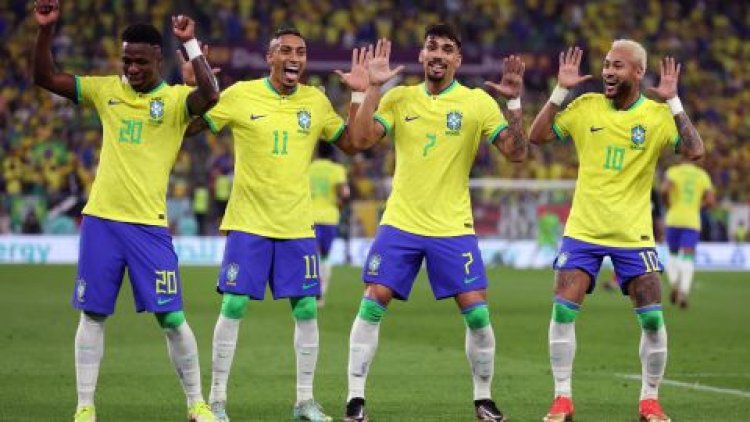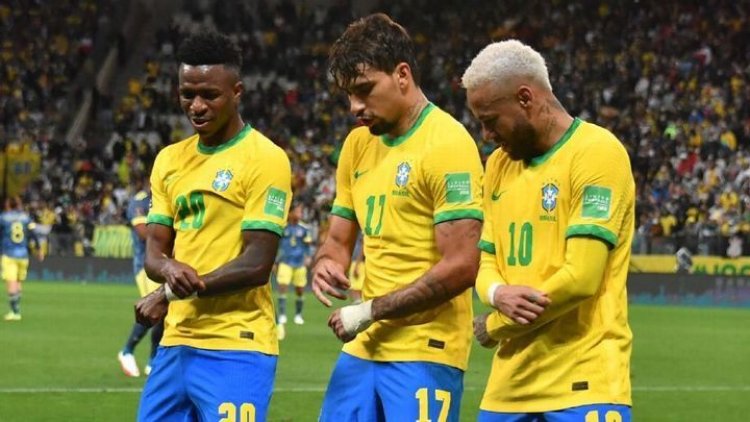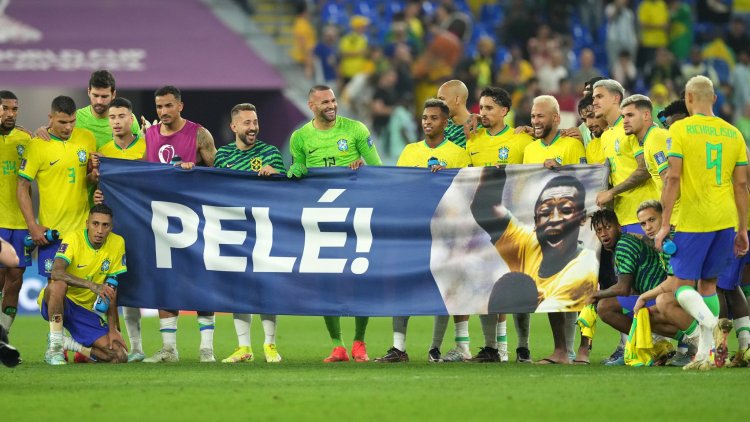Qatar 2022: Brazil players to Keane: ‘We don’t dance because we score, we score because we dance’

On a sunny Andalusian afternoon, Brazil are beating their arch-rivals Argentina 2-0 at the Sarriá Stadium when Zico finds the left-back, Júnior, with a perfect low pass into the box.
After sticking the ball between Ubaldo Fillol’s legs, Júnior turns to the crowd. First, he throws a triumphant uppercut in the air. Then he turns to his teammates and dances a few samba steps.
That’s when he became the proud pioneer of a tradition that has been followed by other Brazilian strikers, such as the former Napoli player Careca, who danced the Lambada twice against Sweden at the 1990 World Cup in Italy, and now Vinícius Jr and Neymar, who were the targets of criticism — particularly from the ITV pundit Roy Keane — after showing off their moves against South Korea on Monday.
“I don’t like this,” Keane said after Brazil celebrated all four goals with a series of dance moves — at one point including Tite, the manager. “People say it’s their culture. But I think that’s really disrespecting the opposition. It’s four goals and they are doing it every time.
“I don’t mind so much the first jig, it’s the one after that, and the manager getting involved. I’m not happy about it. I don’t think it’s good at all.”
Júnior counters this view, arguing that dance is an inherent part of Brazilian culture. “I believe I was the first one doing samba steps in a World Cup,” says Júnior, who is in Doha as a TV pundit for Brazilian channel, Globo. “But first things first: we don’t dance because we score. We score because we dance, and that has always been so, due to the relation music and dance has with Brazilian football.”
Júnior recalls a specific context to his samba show in 1982. Back then, he demonstrated his gifts as a singer when he recorded Brazil’s World Cup anthem. “The song, called Voa, Canarinho, was huge on the radios, sold more than 500,000 copies, and there was a Brazilian Navy band that kept playing it when we entered the pitch in Spain,” he remembers.

“When I scored against Argentina, I saw them and went to celebrate with them. That made me feel like dancing. Only two dance steps, nothing but that. It’s been 40 years since that, and now people come to say that Brazilian dance is a form of disrespect or a way to scorn the opponent. No one said anything bad about it in 1982.”
Brazil has a rich and diverse history of dance, inspired by traditional Portuguese and native styles, and boosted by more syncopated rhythms, which were brought to the country by African slaves from Congo and Angola over three centuries until the 1800s, and generated samba and other genres. Brazil’s class of 1982 was deeply connected to the samba and carnival culture that dominates the country in the first months of every year.
From the 1970s until the early 2000s, football players like Zico, Romário and Edmundo could be easily spotted dancing in the samba school parades at Rio de Janeiro’s Sambadrome or in street carnival bands. But musical preferences, as well as the habits, tend to change as the years go by. Today’s stars prefer the privacy of VIP boxes when visiting the Sambadrome. For Vinícius Jr, Neymar and Lucas Paquetá, it’s all about pagode (samba influenced by R&B), Brazilian funk and trap.

“It has become very clear to all that this culture of movement has entered firmly in our lives with this wave of online dancing, memes and short videos, adopted by so many people,” says Thiago Soares, Brazilian guest artist of the Royal Ballet, where he performed for 16 years as principal dancer. “Dancing is a universal expression, one that dismisses the knowledge of languages to be appreciated. I cannot believe someone could show any discomfort regarding a celebration of joy.”
Deborah Colker, one of the most distinguished Brazilian choreographers and winner of the Laurence Olivier award for outstanding achievement in dance, points out that even Neymar’s run-up to take a penalty is a “little dance”.
“The word here is joy,” she says. “I don’t see any scorn or arrogance, I only see the opposite. I see generosity, but that has to do with a different approach to the body, which is clear in Brazilian culture. In Brazil, you clap your hands three times in a rehearsal and people are dancing. And I’m glad the players think their bodies are their primal instrument of joy. There is a nobility in that.”




















